Planks are essential for training core stabilization and promoting strength and stability throughout the scapulothoracic region. While it is common to progress this exercise by holding it for longer periods of time, there are more efficient—and effective—methods of progressing a plank, including adding movement using gliders. Gliders provide a dynamic challenge by incorporating extremity movement and resistance, which helps increase core and upper-body strength.
When incorporating gliders into a client’s program, begin with static planks before progressing to dynamic planks. This ensures the client has the proper strength and stability throughout the kinetic chain, and will maintain proper form while moving on the gliders. If you don’t have access to gliders, you can use folded towels on a wooden floor.
The following exercises, which feature various skill levels, planes of motions and extremity movements, can be plugged into a client’s current program. Depending on the client’s skill level, sets and repetitions may vary. In addition, you can adjust the challenge by having clients perform these planks from either the forearms or the hands.
Plank With Knee to Elbow

Goal: Add basic, unilateral lower-body movement to a traditional plank
How to Perform: Place the feet on top of the gliders and assume a high-plank position. Start with the feet together and engage the core and upper body. Draw the right knee toward the right elbow. Return to center and draw the left knee toward the left elbow. Continue alternating movements. Complete two sets of six to 10 repetitions on each leg.
Spiderman Planks
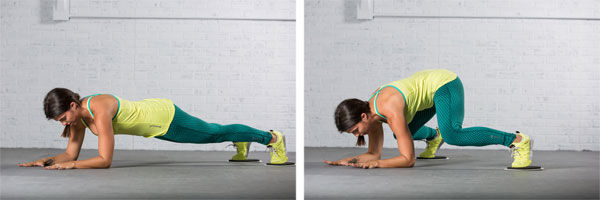
Goal: Incorporate bilateral, lower-body movement into a traditional plank
How to Perform: Place the feet on top of the gliders and assume a forearm plank position. Start with the feet together and engage the core and upper body. Simultaneously draw the right knee toward the right elbow and the left knee toward left elbow. The hips should also lift while the legs draw inward. The knees do not touch the elbows. Release the body back to a plank and continue this motion. Complete two sets of six to 12 repetitions on each leg.
Plank With Hip Rotation and Knee Extension
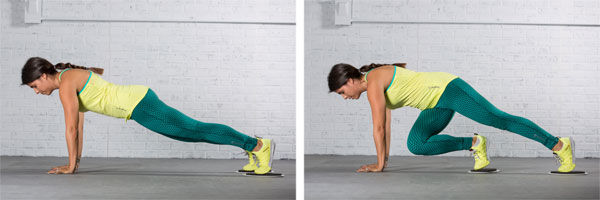
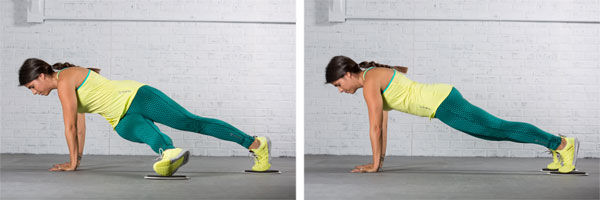
Goal: Incorporate hip rotation in the transverse plane, which requires core activation to maintain upper-body alignment, control and balance
How to Perform: Place the feet on top of the gliders and assume a high-plank position. Start with the feet hip-distance apart and engage the core and upper body. Draw the right knee toward the left elbow and then extend the right knee out to the left side. Return to center and cross the left knee toward the right elbow and extend the left knee out to the left side. Continue alternating sides, imagining the toe is reaching further with each extension. Complete two sets of six to 10 repetitions on each leg.
Plank to Pike
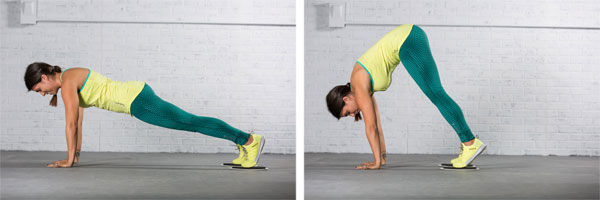
Goal: Stabilization and movement in one motion
How to Perform: Place the feet on top of the gliders and assume a forearm plank position. Start with the feet hip-distance apart and engage the core and upper body. Exhale and lift the hips into the air, keeping the legs straight and eyes focused on the toes. Inhale and slowly lower back into a plank and hold for several seconds. Complete two sets of six to 15 repetitions on each leg.
Forearm Planes-of-motion Plank*
Goal: Challenge upper-body strength and stability while moving in three planes of motion
*This exercise can be used as a reaction drill by calling out the plane of motion or movement.
How to Perform: Assume a forearm plank with the arms on the gliders. Keep the feet wide to create a wide base of support that makes it easier to maintain a neutral and stable pelvis.
Sagittal: Move the arms forward and back, alternating between the right and left arm.
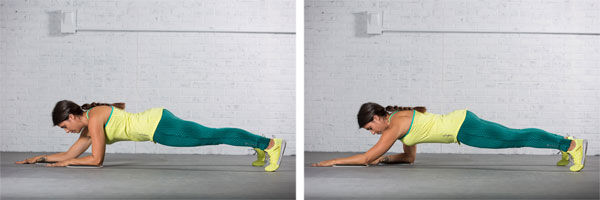
Frontal: Move the arms “out and in” (right and left), alternating between the right and left arm.
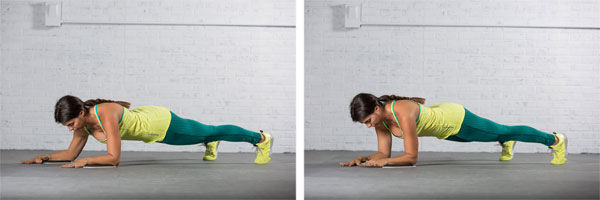
Transverse: Move the arms in a rotational manner. Circles are ideal, working clockwise and counterclockwise movements.
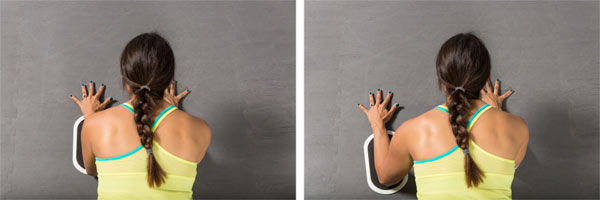

Complete two sets of six to 10 repetitions on each arm.
Plank-up With Rotation
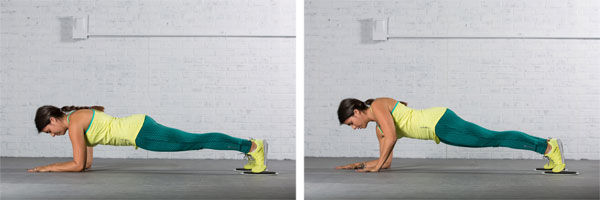
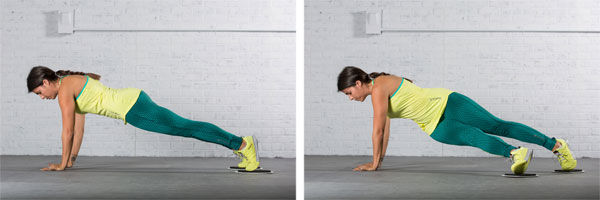
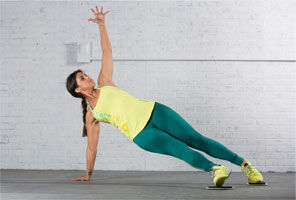
Goal: Upper-body stabilization combined with movement
How to Perform: Place the feet on top of the gliders and assume a forearm plank position. Start with the feet hip-distance apart and engage the core and upper body. Walk up onto the hands with the right arm leading. Rotate to the right to open toward a side plank and lift the right arm into the air. Place the right hand onto the mat, and lower back down onto the forearms. Next, walk up with the left arm leading, rotate left and lift the arm into the air. Place the left hand back on the mat and continue alternating sides. Complete two sets of six to 10 repetitions on each side.




 by
by 











 by
by